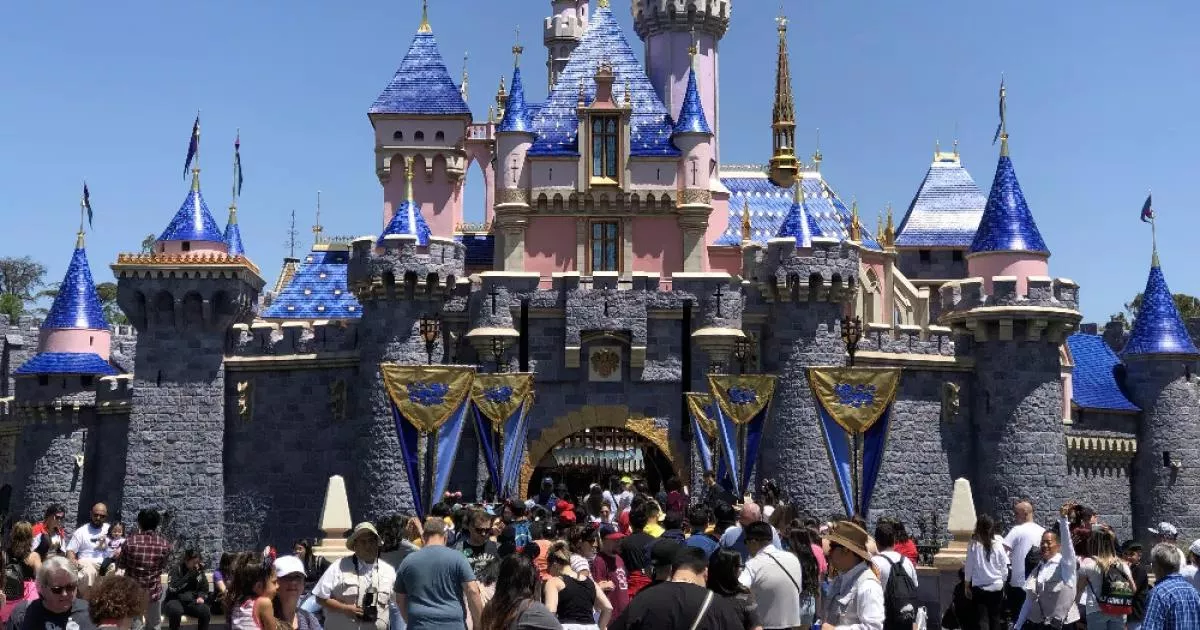Disneyland, located in Anaheim, California, is the first theme park created by the Walt Disney Company. Opened on July 17, 1955, it holds the distinction of being the only Disney park directly overseen by Walt Disney during its design and construction.
1903: Horseless Carriages Models
The horseless carriages are modeled after cars built in 1903 and are two-cylinder, four-horsepower (3 kW) engines with manual transmission and steering.
1939: Inspiration from New York World's Fair
In 1939, The New York's World Fair was one of the sources of inspiration that Walt Disney used in the creation of Disneyland.
August 31, 1948: First Draft of Disneyland Plans
On August 31, 1948, Walt Disney sent the earliest documented draft of his plans for a theme park, referred to as "Mickey Mouse Park," to studio production designer Dick Kelsey.
1953: Disney Buys Land in Anaheim
In 1953, after a feasibility study by the Stanford Research Institute, Walt Disney purchased a 160-acre site near Anaheim for the Disneyland project.
July 16, 1954: Construction Begins on Disneyland
On July 16, 1954, construction began on Disneyland, with a total cost of $17 million.
1954: Construction Begins on Disneyland
In 1954, construction commenced on Disneyland, spearheaded by WED Enterprises, a creative team hand-picked by Walt Disney.
1954: Bob Gurr Title
Throughout all the iterations of Disneyland during the 17 or so years when Disney was conceiving it, one element remained constant: a train encircling the park. The primary designer for the park transportation vehicles was Bob Gurr who gave himself the title of Director of Special Vehicle Design in 1954.
July 17, 1955: Disneyland Opening Day
On July 17, 1955, Disneyland Park officially opened in Anaheim, California, becoming the first theme park by the Walt Disney Company. It was the only park designed and constructed under Walt Disney's direct supervision.
1955: Disneyland Opening
As of May 18, 2024, this was the first time character performers have unionized since Disneyland's opening in 1955.
1955: Santa Fe Rail Pass Accepted
From 1955 to 1974, the Santa Fe Rail Pass was accepted in lieu of a Disneyland "D" coupon.
1957: Holidayland Opens
In 1957, Holidayland opened to the public with a nine-acre (3.6 ha) recreation area including a circus and baseball diamond.
September 1959: Nikita Khrushchev Denied Visit to Disneyland
In September 1959, Soviet First Secretary Nikita Khrushchev was famously denied a visit to Disneyland due to Cold War tensions and security concerns.
1959: Disneyland Monorail Opens
In 1959, the Disneyland Monorail opened in Tomorrowland as the first daily-operating monorail train system in the Western Hemisphere.
1959: Sleeping Beauty Film Inspiration
Sleeping Beauty Castle features a walk-through telling the story of Disney Animation's 1959 film Sleeping Beauty, in the style of the film's production designer Eyvind Earle.
1960: Walt Disney Productions Buys All Disneyland Shares
By 1960, Walt Disney Productions had bought out all other shares of Disneyland, Inc., solidifying its ownership of the park.
1960: Heliport Relocation
In 1960, Los Angeles Airways' helicopter service moved from Anaheim/Disneyland Heliport to a new heliport north of the Disneyland Hotel.
1960: Disney's Candlelight Processional
Since 1960, Disney's Candlelight Processional has been performed in Town Square during the holiday season each year.
1960: Inspiration for Adventureland Treehouse
The Adventureland Treehouse was inspired by Walt Disney's 1960 film Swiss Family Robinson.
1961: Holidayland Closes
Holidayland, which opened in 1957, closed in late 1961.
1961: Monorail Track Extended
In 1961, the Disneyland Monorail's track was extended and a second station opened at the Disneyland Hotel.
1963: Assassination of John F. Kennedy
In 1963, The assassination of John F. Kennedy caused the first unexpected early closure in Disneyland history. The second one would be the anti-war protest on August 6, 1970.
1963: Discussions on Hiring Black Employees
In 1963, the Congress of Racial Equality discussed hiring more black people with Disneyland officials, who said they would consider their requests.
1963: Walt Disney's Enchanted Tiki Room Opens
Walt Disney's Enchanted Tiki Room opened in 1963 at the entrance to Adventureland, marking the first attraction to employ Audio-Animatronics.
1964: Regional Sale of Doritos Begins
In 1964, the Frito-Lay Company started selling "Doritos" regionally after seeing their popularity at Disneyland's Casa de Fritos.
1966: Addition of New Orleans Square
In 1966, Disneyland expanded with the addition of New Orleans Square, enhancing the park's themed environments.
1966: Nationwide Sale of Doritos Begins
In 1966, the Frito-Lay Company started selling "Doritos" nationwide after seeing their popularity at Disneyland's Casa de Fritos.
May 22, 1968: Los Angeles Airways Crash in Paramount
On May 22, 1968, a Los Angeles Airways helicopter crash in Paramount, California, killed 23 people. This incident contributed to the end of helicopter passenger service between Disneyland and Los Angeles International Airport.
August 14, 1968: Los Angeles Airways Crash in Compton
On August 14, 1968, a second Los Angeles Airways helicopter crash in Compton, California, killed 21 people, leading to the end of helicopter passenger service between Disneyland and Los Angeles International Airport.
1968: Theme Park Gross Revenue
In 1968, the Disneyland theme park grossed $65,151,000.
February 1970: Bank of America Arson in Isla Vista
In February 1970, the arson of a Bank of America in Isla Vista was a point of reference during the Yippie protest at Disneyland on August 6, 1970.
1971: Opening of Walt Disney World
In 1971, Walt Disney World Resort opened, but Disneyland continued to maintain its status as a major tourist attraction.
1972: Halloween Tree idea
In 1972 was the Halloween tree idea that author Ray Bradbury would later homage in 2007 at Disneyland as a decoration.
1972: Bear Country Addition
In 1972, Bear Country was added to Disneyland Park (now known as Bayou Country).
1972: Opening of Bear Country
In 1972, Disneyland introduced Bear Country (later known as Bayou Country), adding a new themed area to the park.
1972: Opening of Bear Country and Introduction of Main Street Electrical Parade
In 1972, Disneyland opened Bear Country and introduced the Main Street Electrical Parade.
1974: America Sings Replaces Walt Disney's Carousel of Progress
In 1974, Walt Disney's Carousel of Progress was replaced by America Sings, an audio-animatronic theater show celebrating American music, in preparation for the United States Bicentennial.
1974: End of Santa Fe Railway Presentation
The Atchison, Topeka and Santa Fe Railway presented the Disneyland Railroad until 1974.
March 1975: Flight to the Moon Rethemed as Mission to Mars
In March 1975, the Flight to the Moon attraction was rethemed as Mission to Mars.
1975: Debut of America on Parade
In 1975, America on Parade debuted as part of Disneyland's celebration of the United States Bicentennial.
1976: America on Parade Run Through
In 1976, America on Parade continued to run in celebration of the United States Bicentennial.
1977: Opening of Space Mountain
In 1977, Space Mountain opened at Disneyland to much acclaim, becoming a highly popular attraction.
1979: Replacement of Mine Train Through Nature's Wonderland by Big Thunder Mountain Railroad
In 1979, the Mine Train Through Nature's Wonderland was replaced by the Big Thunder Mountain Railroad rollercoaster.
1982: Passport tickets made available to groups
Before 1982, passport tickets were available to groups only.
1982: End of Ticket System
In 1982, Disneyland discontinued the use of individual ride tickets, which had been in place since the park's opening day.
1982: Introduction of "Passports"
In 1982, Disneyland replaced individual ride tickets with "passports", charging a single admission price for unlimited access to all attractions (except shooting galleries).
1982: Fantasyland Closed for Refurbishment
In 1982, Fantasyland was closed for refurbishment in preparation for its reopening as "New Fantasyland".
1983: Reopening of Fantasyland as "New Fantasyland"
In 1983, Fantasyland reopened to the public as "New Fantasyland" after undergoing refurbishment.
December 5, 1985: Skyfest Celebration
On December 5, 1985, Disneyland launched one million balloons as part of the Skyfest Celebration, commemorating the park's 30th anniversary.
1988: "Who Framed Roger Rabbit" film inspiration
Mickey's Toontown was partly inspired by the fictional Toontown from the 1988 Touchstone Pictures film Who Framed Roger Rabbit.
1993: Opening of Mickey's Toontown
In 1993, Disneyland opened Mickey's Toontown, providing a whimsical and interactive experience for guests.
1993: Mickey's Toontown Addition
In 1993, Mickey's Toontown was added to Disneyland Park.
1999: Introduction of FastPass System
In 1999, Disney introduced the FastPass system, a no-cost method to reserve an entrance time to an attraction and reduce wait times.
2000: Completion of Mickey and Friends Parking Structure
In 2000, the Mickey and Friends parking structure was completed. At the time, it was the largest parking structure in the United States.
2000: Elaborate Fireworks Shows
Since 2000, Disneyland's fireworks shows have become more elaborate, featuring new pyrotechnics, launch techniques, and story lines.
2001: Opening of Disney California Adventure Park
In 2001, Disney California Adventure Park opened on the site of Disneyland's original parking lot, expanding the Disneyland Resort.
2001: Monorail Destination Changes
With the creation of Downtown Disney in 2001, the new destination of the Disneyland Monorail became Downtown Disney, instead of the Disneyland Hotel.
2003: Harrison Price Recognized as a Disney Legend
In 2003, Harrison Price of the Stanford Research Institute was recognized as a Disney Legend for his analysis that helped Disney choose the location for Disneyland.
2003: Matt Ouimet Assumes Leadership of the Disneyland Resort
In late 2003, Matt Ouimet, the former president of the Disney Cruise Line, was promoted to assume leadership of the Disneyland Resort.
2004: Introduction of Air Launch Pyrotechnics System
In 2004, Disneyland introduced a new air launch pyrotechnics system to reduce ground-level smoke and noise, and decrease negative environmental impacts. Disney also announced it would donate the patents to a non-profit organization.
2004: Major Renovations in Preparation for the 50th Anniversary
In 2004, Disneyland underwent major renovations, restoring attractions like Space Mountain, Jungle Cruise, the Haunted Mansion, Pirates of the Caribbean, and Walt Disney's Enchanted Tiki Room, in preparation for the "Happiest Homecoming on Earth" celebration.
May 5, 2005: "Happiest Homecoming on Earth" Begins
On May 5, 2005, Disneyland Park began the "Happiest Homecoming on Earth" celebration, commemorating its fiftieth anniversary.
July 2006: Ed Grier Named President of Disneyland Resort
In July 2006, Matt Ouimet left The Walt Disney Company, and Ed Grier was named president of the Disneyland Resort.
September 30, 2006: "Happiest Homecoming on Earth" Ends
On September 30, 2006, the "Happiest Homecoming on Earth" celebration at Disneyland concluded.
October 31, 2007: Halloween Tree Presentation
On October 31, 2007, author Ray Bradbury attended the presentation of a Halloween Tree in Frontierland, to be included as part of its annual park-wide Halloween decorations every year.
November 7, 2008: End of "Walt Disney's Parade of Dreams"
On November 7, 2008, "Walt Disney's Parade of Dreams" ended its run as part of Disneyland's 50th anniversary celebration.
2008: Mark VII Monorail Installed
In 2008, the most recent operating generation of Disneyland Monorail trains, the Mark VII, was installed.
December 31, 2008: "Year of a Million Dreams" Ends
On December 31, 2008, the "Year of a Million Dreams" celebration at Disneyland ended.
March 27, 2009: Premiere of "Celebrate! A Street Party"
On March 27, 2009, "Celebrate! A Street Party" premiered, replacing "Walt Disney's Parade of Dreams".
October 2009: George Kalogridis Replaces Ed Grier
In October 2009, Ed Grier announced his retirement, and was replaced by George Kalogridis as president of the Disneyland Resort.
2009: Rotating Repertoire of Firework Spectaculars
Since 2009, Disneyland has moved to a rotating repertoire of firework spectaculars.
2009: "The Princess and the Frog" film inspiration
Tiana's Bayou Adventure is inspired by Disney Animation's 2009 film The Princess and the Frog.
January 1, 2010: Give a Day, Get a Disney Day volunteer program launch
On January 1, 2010, Disney Parks began the Give a Day, Get a Disney Day volunteer program, encouraging people to volunteer with a participating charity and receive a free Disney Day at either a Disneyland Resort or Walt Disney World park.
March 9, 2010: Give a Day, Get a Disney Day program ends
On March 9, 2010, Disney announced that it had reached its goal of one million volunteers for the Give a Day, Get a Disney Day program, and ended the promotion to anyone who had not yet registered and signed up for a specific volunteer situation.
May 27, 2011: Debut of "Mickey's Soundsational Parade"
On May 27, 2011, Disneyland debuted "Mickey's Soundsational Parade".
2011: Debut of Projection Mapping Technology
In 2011, projection mapping technology debuted on It's a Small World with the creation of The Magic, the Memories and You.
October 27, 2014: Permanent Airspace Restriction
On October 27, 2014, the United States Federal Aviation Administration declared a permanent zone of prohibited airspace around both Disneyland and some of the surrounding areas at Sleeping Beauty Castle, prohibiting aircraft, including drones, from flying within this zone.
May 22, 2015: Debut of "Paint the Night" Parade
On May 22, 2015, Disneyland debuted a new nighttime parade called "Paint the Night" as part of the park's 60th anniversary.
July 2015: 60th Diamond Celebration Anniversary
In July 2015, Disneyland celebrated its 60th Diamond Celebration anniversary. Disneyland Park introduced the Paint the Night parade and Disneyland Forever fireworks show, and Sleeping Beauty Castle was decorated in diamonds with a large "60" logo.
2015: Expansion of Projection Mapping Technology
In 2015, projection mapping technology expanded to Main Street and Sleeping Beauty Castle with the premiere of Disneyland Forever.
February 2016: Demand-Based Pricing for Single-Day Admission
In February 2016, Disneyland adopted a demand-based pricing system for single-day admission, charging different prices for "value", "regular", and "peak" days, based on projected attendance.
September 2016: Diamond Celebration Concludes
In September 2016, the Diamond Celebration concluded and the whole decoration of the anniversary was removed around Halloween 2016.
2018: Introduction of B-Show Format
The first fireworks show to have the B-show format, which uses smaller fireworks shells and more low-level pyrotechnics, was Believe... In Holiday Magic from the 2018 holiday season.
February 2020: Switch to Multi-Tiered Pricing System
In February 2020, Disneyland switched to a multi-tiered pricing system, initially with 5 pricing tiers, with approximately 64% of days being in Tier 4 and above.
March 14, 2020: Disneyland Park closes due to COVID-19 pandemic
On March 14, 2020, Disneyland Park, along with Disney California Adventure, Downtown Disney, and the resort hotels, closed indefinitely in response to the COVID-19 pandemic.
July 9, 2020: Downtown Disney reopens after COVID-19 closure
After nearly four months of closure due to the COVID-19 pandemic, Downtown Disney reopened on July 9, 2020.
July 17, 2020: Parks' reopening postponed
On July 17, 2020, the parks had been scheduled to reopen on Disneyland's 65th anniversary, but due to rising cases in California, the parks' reopening was once again postponed.
2020: Debut of "Magic Happens" Parade
In 2020, for two weeks before the closure due to the COVID-19 pandemic, the parade "Magic Happens" debuted. There was also a virtual parade available for a limited time.
December 31, 2020: Closure Extended
As of December 31, 2020, Disneyland was expected to stay closed due to the pandemic.
February 2021: "A Touch of Disney" Announced
In February 2021, Disneyland announced a limited-capacity ticketed event called "A Touch of Disney", which would offer guests to shop at stores and enjoy eateries around the park from March 18 through April 19, 2021.
March 5, 2021: Disneyland Reopening Announcement
On March 5, 2021, the California Department of Public Health announced that Disneyland could reopen with capacity restrictions beginning April 1, 2021.
March 25, 2021: DisneylandForward Expansion Plan Announced
On March 25, 2021, the company announced a plan titled DisneylandForward to expand the park with more rides, restaurants, and shops with the Anaheim City Council expected to receive the development plans for approval by 2023.
April 1, 2021: Potential Reopening Date
As of April 1, 2021, the California Department of Public Health announced Disneyland could reopen with capacity restrictions beginning this day.
April 2021: Planned Reopening
In April 2021, then-Disney CEO Bob Chapek said that the company was planning on officially reopening the park in late April 2021.
April 19, 2021: "A Touch of Disney" Concludes
The limited-capacity ticketed event called "A Touch of Disney" concluded on April 19, 2021.
April 30, 2021: Disneyland and Disney California Adventure Reopen
On April 30, 2021, Disneyland along with Disney California Adventure officially reopened with limited capacity and social distancing/mask guidelines in effect.
June 15, 2021: Disneyland Returns to Full Capacity
On June 15, 2021, Disneyland, Disney California Adventure and other theme parks in California were permitted to return to full capacity with most COVID-19 pandemic restrictions lifted per California governor Gavin Newsom's Blueprint for a Safer Economy phased re-opening.
October 2021: Addition of Tier 6 Pricing
In October 2021, Disneyland added Tier 6 to its multi-tiered pricing system.
December 2021: Cumulative Attendance Reaches 757 Million
As of December 2021, Disneyland had a cumulative attendance of 757 million visits, making it the most visited theme park in the world.
October 2022: Addition of Tier 0 Pricing
In October 2022, Disneyland added Tier 0 to its multi-tiered pricing system.
2022: Announcement of "Magic Happens" Return
At D23 Expo 2022, it was announced that the "Magic Happens" parade would return to Disneyland in spring 2023.
January 27, 2023: Disney100 Centennial Celebration Kickoff
On January 27, 2023, Disneyland kicked off the year-long celebration of the centennial of The Walt Disney Company, Disney100. Disneyland Park introduced the Mickey & Minnie's Runaway Railway attraction and Wondrous Journeys fireworks show.
April 13, 2023: First Official "Pride Nite" Announcement
On April 13, 2023, it was announced that Disneyland would be holding its first official "Pride Nite", supporting the LGBTQ community. This comes 25 years after the first celebrated 'Gay Day' at Disneyland, which is identical to the Gay Days at Walt Disney World celebration.
May 2023: Bibbidi Bobbidi Boutique Employee Video Controversy
In May 2023, a video featuring an employee positioned in Fantasyland at the Bibbidi Bobbidi Boutique as one of the Fairy Godmother's apprentices was published on TikTok, generating both criticism from conservative commentators and support from fans on social media due to the employee being male-presenting.
2023: Expected Development Plan Approval
As of 2023, the Anaheim City Council was expected to receive the development plans for DisneylandForward for approval.
2023: Second Most Visited Amusement Park
In 2023, Disneyland attracted 17.25 million visitors, ranking as the second most visited amusement park globally, only surpassed by Magic Kingdom.
2023: "Magic Happens" return
In spring 2023, the parade "Magic Happens" returned to Disneyland.
2023: Construction Costs Equivalent in 2023
The $17 million it cost to build Disneyland in 1954, is equivalent to $153 million in 2023.
May 18, 2024: Character Performers Vote to Unionize
On May 18, 2024, Disneyland character performers voted to join the Actors' Equity Association, with 79% voting in favor. The decision marked the first time these workers have unionized since Disneyland's opening in 1955.
October 2024: Piloting of "Lightning Lane Premier Pass"
In October 2024, Disney began piloting its new "Lightning Lane Premier Pass," allowing guests to enter a faster line at any time (once per ride) without reservations for an additional $400 per person per day.
2024: Critter Country Renamed Bayou Country
In 2024 Critter Country was renamed Bayou Country.
2024: Pixar Place Hotel Renaming
In 2024, Disney's Paradise Pier Hotel was renamed to Pixar Place Hotel as part of the ongoing expansion and rebranding efforts at the Disneyland Resort.
2024: DisneylandForward Expansion Plan Approved
On May 7th, 2024, the DisneylandForward plan was approved by the Anaheim City Council.
Mentioned in this timeline
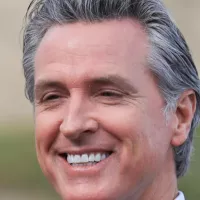
Gavin Newsom is an American politician and businessman currently serving...
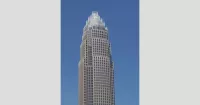
Bank of America is a multinational investment bank and financial...
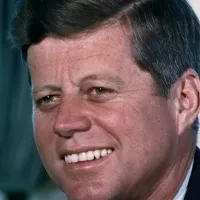
John F Kennedy JFK was the th U S President...
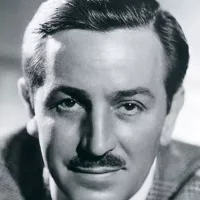
Walter Elias Disney was a highly influential American animator film...
California is a U S state on the Pacific Coast...
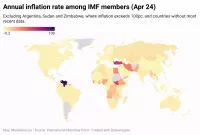
Inflation in economics signifies an increase in the average price...
Trending
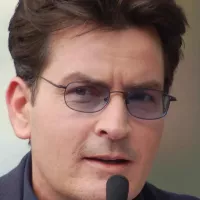
7 months ago Charlie Sheen's 'Two and a Half Men' ending explained, 'Top Gun' spoof returns to streaming.
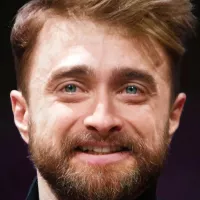
5 months ago Daniel Radcliffe's Post-Potter Roles & HBO's New Harry Potter Series: Navigating Controversy
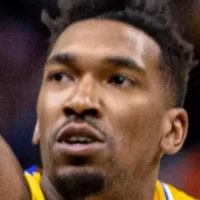
8 months ago Mavericks Announce News Before Kings Game; Malik Monk's Performance Anticipated.

8 months ago George Kittle Discussing 49ers Extension Amidst Brock Purdy Contract Updates and NFL News
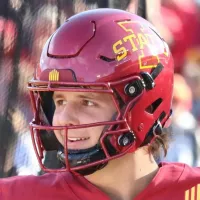
8 months ago Purdy contract talks progress positively; Kittle denies contract dispute rumors, focusing on team.
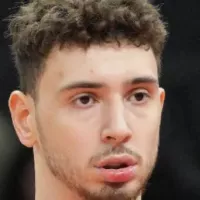
8 months ago Spencer ejected for headbutting Sengun; Jackson-Davis shines in eventful NBA Playoffs game.
Popular

Candace Owens is an American conservative political commentator and author...

Tucker Carlson is an American conservative political commentator known for...

XXXTentacion born Jahseh Dwayne Ricardo Onfroy was a controversial yet...

Ben Shapiro is a prominent American conservative political commentator media...

William Franklin Graham III commonly known as Franklin Graham is...

Bill Gates an American businessman and philanthropist revolutionized personal computing...
